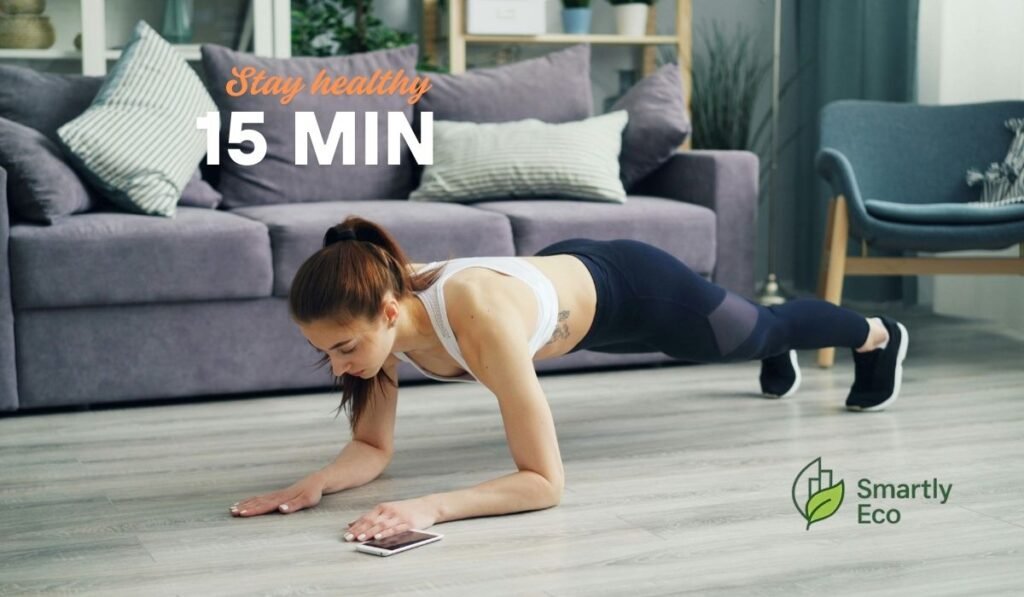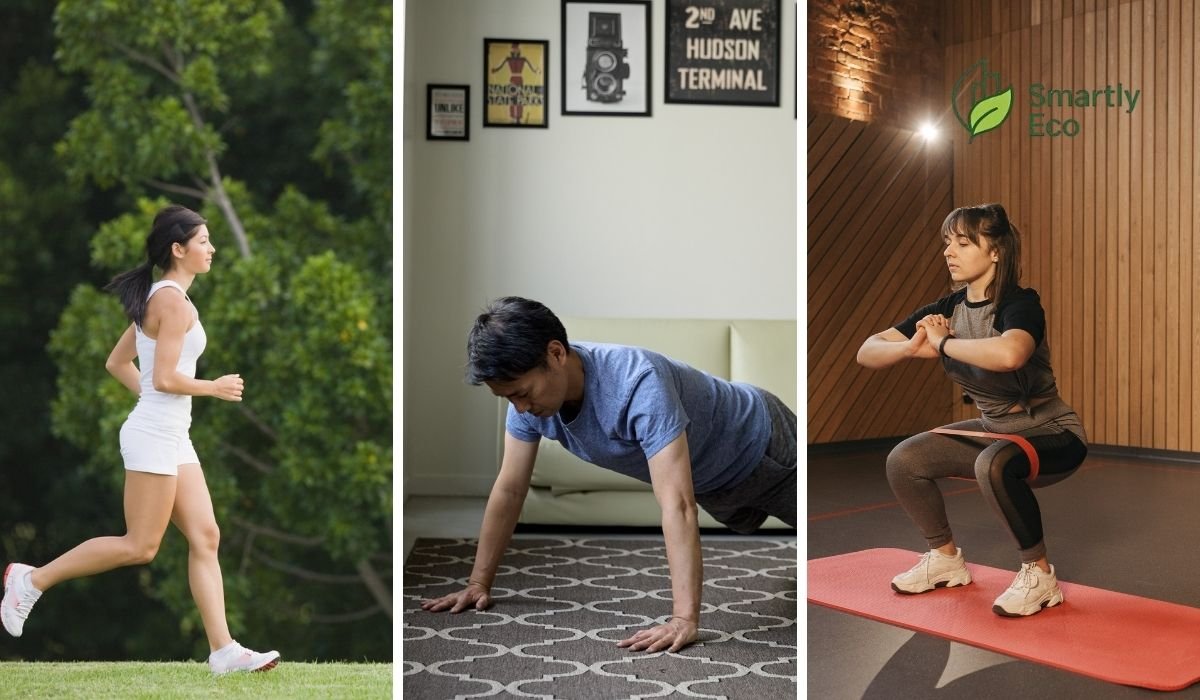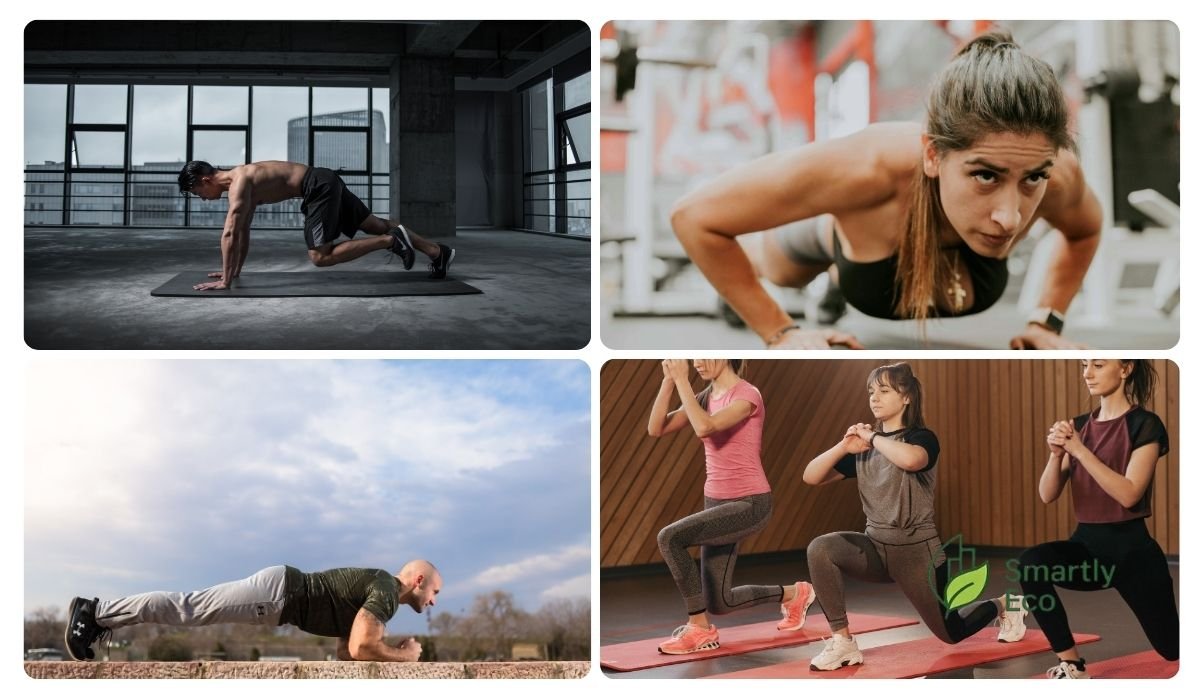If you live in the city, you know the struggle—traffic eats up your time, gym memberships burn a hole in your pocket, and motivation… well, that’s another battle. But here’s the good news: you don’t need fancy machines or hours of training. A full body workout at home can give you the same results—sometimes even better—if done right.
I first stumbled upon this idea while watching an Indian fitness creator guide people through push-ups, squats, and planks in a tiny living room. No gym mirrors. No equipment. Just pure energy, sweat, and results. And the science backs it up: research shows that high-intensity bodyweight training can burn calories as effectively as traditional weight training while improving endurance and strength.
Let’s break down how you can design your own 15-minute home workout routine that targets every muscle, fits into your city lifestyle, and keeps you consistent—without the excuses.
Why Full Body Workouts Work (Especially at Home)
1. They Save Time
In urban life, time is always short. Instead of splitting your days into “chest day” or “leg day,” a full body session gets everything done in one go.
2. They Burn More Calories
Engaging multiple muscle groups at once means higher calorie burn. Harvard Medical School reports that even simple push-ups and squats can torch 200+ calories in a short session for an average person.
3. They Build Functional Strength
City life isn’t about lifting heavy dumbbells—it’s about carrying groceries, climbing stairs, and keeping your posture intact while working long desk hours. Bodyweight training directly helps with this.
4. They’re Sustainable
No equipment, no memberships, no excuses. Even if you’re traveling, you can carry your workout with you.
The 15-Minute Full Body Workout at Home: Minute-by-minute routine
Total time: 20 minutes (warm-up + work + cool down). I kept the short-burst + short-rest cadence used in your insight: roughly 15–20 seconds work blocks with short rests — plus slightly longer holds for plank/back work to build stability.
Use this exact flow: do each exercise for the time shown, rest exactly the rest shown, and move on. If you’re fully new, slow the pace but keep the timings (work:rest) — consistency matters more than speed.
0:00–1:00 — Warm-Up
1:00–1:40 — Exercise 1 — High knee march / jogging in place (40s work / 10s rest)
1:50–2:30 — Exercise 2 — Push-ups (standard or knees) (40s / 10s)
2:40–3:20 — Exercise 3 — Back traction / “back extension” (Superman) (40s / 10s)
3:30–4:10 — Exercise 4 — Push progression / Diamond push-up or tricep push-up (40s / 10s)
4:20–5:00 — Exercise 5 — Squats (controlled tempo) (40s / 10s)
5:10–5:50 — Exercise 6 — Lunges (alternating) (40s / 10s)
6:00–6:40 — Exercise 7 — Plank (hold / or 2 x 20s with 5s rest) (40s / 10s)
6:50–7:30 — Exercise 8 — Mountain climbers (fast) (40s / 10s)
7:40–8:20 — Exercise 9 — Glute bridge (floor hip thrust) (40s / 10s)
8:30–9:10 — Exercise 10 — Shoulder mobility + arm swings (active recovery) (40s / 10s)
9:20–10:00 — Exercise 11 — Burpee-lite / or step-back + standing reach (40s / 10s)
10:00–11:00 — Repeat a second round of your favorite 4 moves (choose: push-ups, squats, plank, mountain climbers) — 40s/10s each.
(If you want to hit 20 minutes: repeat the circuit once more or add 2–3 minutes cardio finish.)
Final 2–3 minutes — Cool down & breathing (gentle forward fold, chest opener, deep belly breaths).
Pro Tip: If you’re a beginner, start with 20 seconds per move. Gradually build up.
Each home workout set explained
Warm-Up (0:00–1:00) — “Wake the body up”
- Do this: March on the spot like you’re walking to the bus — lift knees a little, swing arms. Do shoulder rolls and neck circles.
- Why it helps: It wakes your joints and tells your body “we’re moving now” — reduces risk of pulls.
1) High-knee march / jogging on the spot (1:00–1:40)
- How: Stand tall. Lift each knee up toward your chest one by one. Swing arms. If noisy for neighbors, march and lift knees high slowly.
- Simple cue: Pretend you’re running to catch your ride, but don’t leave the spot.
- Why it’s in the workout: Instant energy. It raises heart-rate without a treadmill and warms hips and calves for the rest of the moves. Great for morning grogginess (city problem #1).
2) Push-ups (1:50–2:30)
- How: Lie face down, hands under shoulders. Push your body up in a straight line, then lower. If full push-ups are hard, rest knees on the floor — still push.
- Simple cue: Imagine pushing your bed away. Keep body straight like a board.
- Why it’s in the workout: Push-ups fix hunched shoulders from screen time. They build chest, shoulder, and arm strength so your posture doesn’t collapse after 8 hours at a desk.
3) Back traction / Superman (2:40–3:20)
- How: Lie face down, arms stretched forward, lift your chest and legs a little like you’re flying. Hold 1–2 seconds, lower.
- Simple cue: Pretend you’re Superman — a gentle lift, not a jump.
- Why it’s in the workout: Sitting weakens the back. This strengthens spinal muscles that keep you upright and help with lower-back pain after a long commute.
4) Diamond or Tricep Push-up (3:30–4:10)
- How: Push-up variation with hands close together forming a diamond. If too hard, do on knees.
- Simple cue: Hands close, push strong.
- Why it’s in the workout: Targets triceps — practical strength for lifting bags, carrying groceries, and that tight-sleeve look.
5) Squats (4:20–5:00)
- How: Feet hip-width, push hips back like sitting on a chair, keep chest up, then stand.
- Simple cue: Sit back, don’t let knees go too far forward.
- Why it’s in the workout: Squats build legs and glutes — the natural engine for walking, stairs, and carrying loads. They boost metabolism by building big muscles.
6) Lunges (5:10–5:50)
- How: Step forward, bend both knees until the front thigh is near parallel, then push back. Alternate sides.
- Simple cue: Step, bend, push. Like stepping over a puddle.
- Why it’s in the workout: Fixes left-right imbalances, improves balance for dodging crowded sidewalks and metro steps.
7) Plank (6:00–6:40)
- How: On elbows and toes, body straight like a board. Breathe.
- Simple cue: Be a plank of wood — hold steady.
- Why it’s in the workout: Core stability = less back pain, better posture, suck-in belly look that’s functional, not just cosmetic.
8) Mountain Climbers (6:50–7:30)
- How: From plank, run knees toward your chest one at a time quickly.
- Simple cue: Imagine running on the floor while keeping your hips steady.
- Why it’s in the workout: Fast cardio in a small space — excellent for fat loss and stress relief between meetings.
9) Glute Bridge (7:40–8:20)
- How: Lie on back, knees bent, lift hips up squeezing glutes, lower slowly.
- Simple cue: Push your hips toward the ceiling like you’re trying to touch the roof with your hips.
- Why it’s in the workout: Strengthens glutes that keep hips stable and reduce lower-back strain from sitting.
10) Shoulder mobility & arm swings (8:30–9:10)
- How: Big arm circles, reach behind chest and stretch shoulders.
- Simple cue: Shake out the shoulders like you’re shrugging off the workday.
- Why it’s in the workout: Prevents the tight shrug that comes from hour-long laptop sessions.
11) Burpee-lite / Step back + reach (9:20–10:00)
- How: Instead of full burpee, step back to plank and stand up reaching overhead.
- Simple cue: Step back, stand tall, reach. Repeat.
- Why it’s in the workout: Keeps intensity up without being brutal on joints — good for beginners and people in apartments.
Final rounds & Cool down (10:00–end)
Repeat favorite moves for one more short circuit (push-ups, squats, plank, climbers) if energy allows. Finish with gentle stretches and 5 deep belly breaths to reset.
Practical tips (straight talk for city life)
- Do this before shower: Morning is easiest — do it, then bathe. It won’t eat your schedule.
- If you’re noisy upstairs/downstairs: trade jumps for marches. Low-impact keeps results.
- Short on time? Do one 4-move mini-circuit (10 minutes) and you’ve done something.
- Traveling? This is hotel-room friendly. No equipment, no fuss.
- Family-friendly: Kids can do the moves with you — a win for habit forming.
FAQs on Full Body Workout at Home
Q1. Can a 15-minute workout really make a difference?
Yes, if done consistently! Research shows that short, high-intensity bodyweight workouts can be as effective as longer gym sessions. Many people in cities find 15 minutes daily easier to stick with than an hour-long gym routine. Think of it as a “consistency hack.”
Q2. What if I don’t have enough space at home?
No problem. This workout is designed for apartments and small rooms. Exercises like squats, planks, and lunges need no more than a yoga mat’s worth of space. I know people who do this in their bedroom between bed and wardrobe!
Q3. Do I need equipment for this workout?
Not at all. Your body weight is enough. In fact, the beauty of this routine is its zero-equipment nature—you can do it in your living room, balcony, or even hotel room. If you want to level up later, add water bottles as weights.
Q4. Will I lose weight with just a 15-minute home workout?
Weight loss depends on diet + activity. This workout burns calories and builds lean muscle, which boosts metabolism. But pair it with a clean, balanced diet (think veggies, proteins, fewer processed foods) for best results. From experience, those who combined both saw faster fat loss compared to workout-only approaches. You may check out our blog of belly fat loss for detailed action plan.
Q5. What if I feel sore after the first few days?
Soreness is normal—it means your muscles are adapting. Make sure you warm up and cool down properly. Stay hydrated, and if it’s too much, reduce the intensity (20 seconds per move instead of 40). Within a week, soreness reduces, and energy levels go up.
Real Urban Experience: My First Week Doing This
When I first swapped my 40-minute gym session for this home routine, I was skeptical. “Will I even sweat?” I thought. By day three, I was drenched. My energy shot up, and the best part? No commute, no waiting for machines, no excuses. Just a mat, some space, and commitment.
Many of my city friends (corporate jobs, long commutes) have adopted this, and they say the same thing: it feels practical. You can literally do it in your living room, balcony, or even hotel room.
Conclusion — a small finish with a big promise
Tomorrow morning — at the same time you’d normally snooze the alarm — set it 15 minutes earlier. Do this routine. Text me (or comment) after day 3 and tell me how your body feels — I want to hear what changed!
Nikita Palesha is a wellness advocate and eco-conscious writer who shares simple, sustainable tips for everyday living. She’s passionate about mindful choices that support a healthier planet and a balanced lifestyle.






